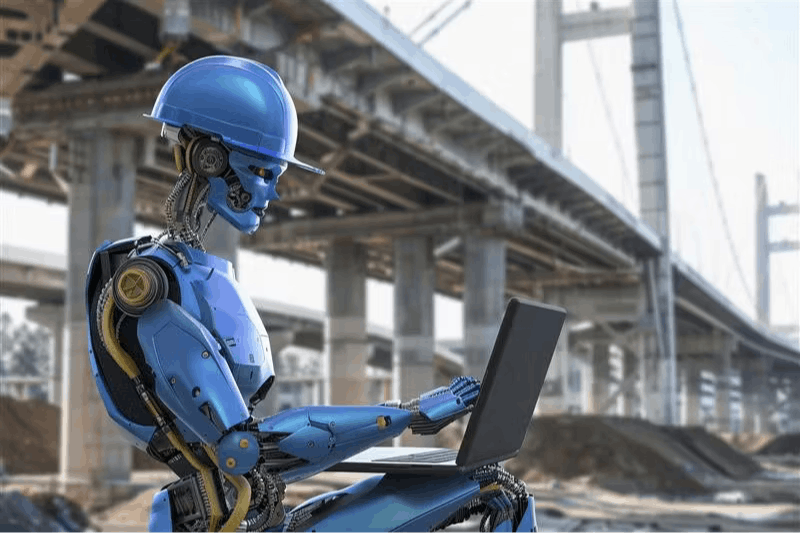Not long ago, the idea of artificial intelligence playing a role in government approvals would’ve sounded far-fetched. But now the Australian government has announced plans to use AI to help clear a massive backlog of housing applications.
The goal? To fast-track roughly
It hasn’t signed off on any projects yet. But the fact that regulators are even planning to hand this kind of work to AI is a big signal for the construction industry. If algorithms are trusted with approvals, what else might they eventually handle in the construction workflow?
The First Step: AI in Housing Approvals
The housing crisis in Australia is pushing policymakers to try new approaches. Right now, thousands of projects are stuck waiting because approvals move at a crawl.
The plan is to bring AI into the process to help with:
Faster reviews: checking applications against codes and environmental rules more quickly.
Consistency: cutting down on variations in how different staff interpret regulations.
Scalability: working through a large backlog of projects without having to hire armies of new reviewers.
It’s still early, and no one knows exactly how effective the rollout will be. But even this step, letting AI into the approvals process at all, shows how fast automation is creeping into one of the slowest parts of construction.
Why This Is a Big Deal for Construction
On paper, approvals are just paperwork. But in reality, they’re one of the biggest bottlenecks in construction. A project can have financing, contractors, and crews ready, and still sit idle for months because the approvals haven’t come through.
If AI can trim even part of that delay, it matters a lot:
Developers: Quicker approvals mean lower holding costs and faster returns.
Contractors: Fewer “hurry up and wait” moments while crews sit around burning money.
Owners: Faster delivery of badly needed housing supply.
Construction has a reputation for being slow to digitize. If regulators start using AI at the approval level, the ripple effect could reach project design, coordination, and delivery too.
The Risks Nobody Can Ignore
For all the upside, this isn’t risk-free. And in construction, small mistakes often turn into big, expensive problems.
Some of the biggest concerns are:
- AI is only as good as the data it’s trained on. If the training set is incomplete, errors can slip through.
- Systems trained on historical approvals may unintentionally favor certain project types or areas.
- If a bad approval slips through, who takes the blame? The builder? The regulator? Or the company that wrote the software? That gray area makes people uneasy.
- Most AI tools don’t explain their reasoning. In an industry built on trust and safety, “the system says so” isn’t a good enough answer.
And here’s the kicker: construction mistakes aren’t small. If AI is used without proper oversight, the risks could outweigh the time saved.
Beyond Approvals: Where AI Could Go Next
Approvals might just be the start. Once regulators prove AI can handle some of this work, the same ideas will creep into other areas of construction:
AI in BIM: design checks could scan BIM models for compliance before they’re ever submitted, helping firms avoid costly mistakes.
Clash detection: Current BIM tools flag conflicts; AI could go further by suggesting fixes.
Scheduling: Weather delays, late deliveries, and labor shortages wreck schedules. AI could pull in live data and adjust plans automatically.
Cost estimation: Instead of ballpark numbers, AI could analyze decades of project data to highlight where overruns are likely.
Site monitoring: Cameras already cover most jobsites. With computer vision, AI could track progress, flag safety issues, or count materials automatically.
This isn’t about replacing people. It’s about offloading grunt work, like sifting through regulations, crunching schedules, scanning drawings, so humans can focus on decisions that actually require judgment.
A Human in the Loop
Even as AI gets smarter, construction isn’t something you can set on autopilot. Too much is at stake.
The most realistic future is hybrid:
- AI handles the repetitive, data-heavy checks.
- Humans review the edge cases, apply context, and make the final call.
For example, AI might flag that a fire clearance is missing in a design. But it’s still the engineer who decides how to fix it. That mix keeps projects efficient without giving up accountability.
Closing Thoughts
Right now, AI hasn’t approved a single project in Australia, but the fact that regulators want to use it for approvals is a sign of what’s coming. From cutting red tape to scanning designs and adjusting schedules, automation is inching closer to the core of construction.
The industry has been called “slow to change” for decades. But when governments themselves are experimenting with AI, it’s clear the pace is picking up.
The question isn’t whether AI will touch construction. The question is: how much of the decision-making are we willing to hand over?


